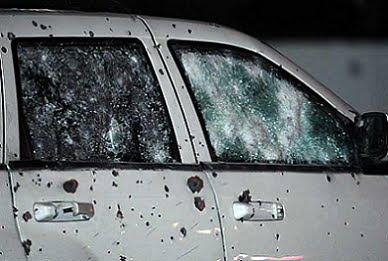Despite the fact that several elements of the Mexican army were a few feet from the crime scene, they failed to stop a slaughter perpetrated by an armed commando in Ciudad Juarez that killed five people.
Five people, including the owner of a truck burritos, were riddled with bullets killed by a group of sicarios a few feet from the border bridge of Zaragoza, and right in front of the passive eyes of the army who did not make an attempt to stop the attack despite being a few feet away.
According to a report on channel 44 in Ciudad Juárez, the events occurred on the afternoon of Friday, May 28 a few feet from the border crossing and without the Mexican army intervening.
Although they were a few feet from the scene, the elements of the Mexican army assigned to the international bridge in Zaragoza never intervened or tried to stop the shootings.
A report by Channel 44 shows the images of the distance from the site of the shooting to the gate of Zaragoza, where the soldiers were standing and did nothing to stop the aggression.
Five people, including the owner of a truck burritos, were riddled with bullets killed by a group of sicarios a few feet from the border bridge of Zaragoza, and right in front of the passive eyes of the army who did not make an attempt to stop the attack despite being a few feet away.
According to a report on channel 44 in Ciudad Juárez, the events occurred on the afternoon of Friday, May 28 a few feet from the border crossing and without the Mexican army intervening.
The shooting occurred when a pickup truck parked near a bus converted to sell burritos and several of the occupants got out to buy something to eat. Right after an armed group arrived and opened fire with rifles, killing the crew of the SUV and the owner of the business selling burritos.
Although they were a few feet from the scene, the elements of the Mexican army assigned to the international bridge in Zaragoza never intervened or tried to stop the shootings.
A report by Channel 44 shows the images of the distance from the site of the shooting to the gate of Zaragoza, where the soldiers were standing and did nothing to stop the aggression.























































